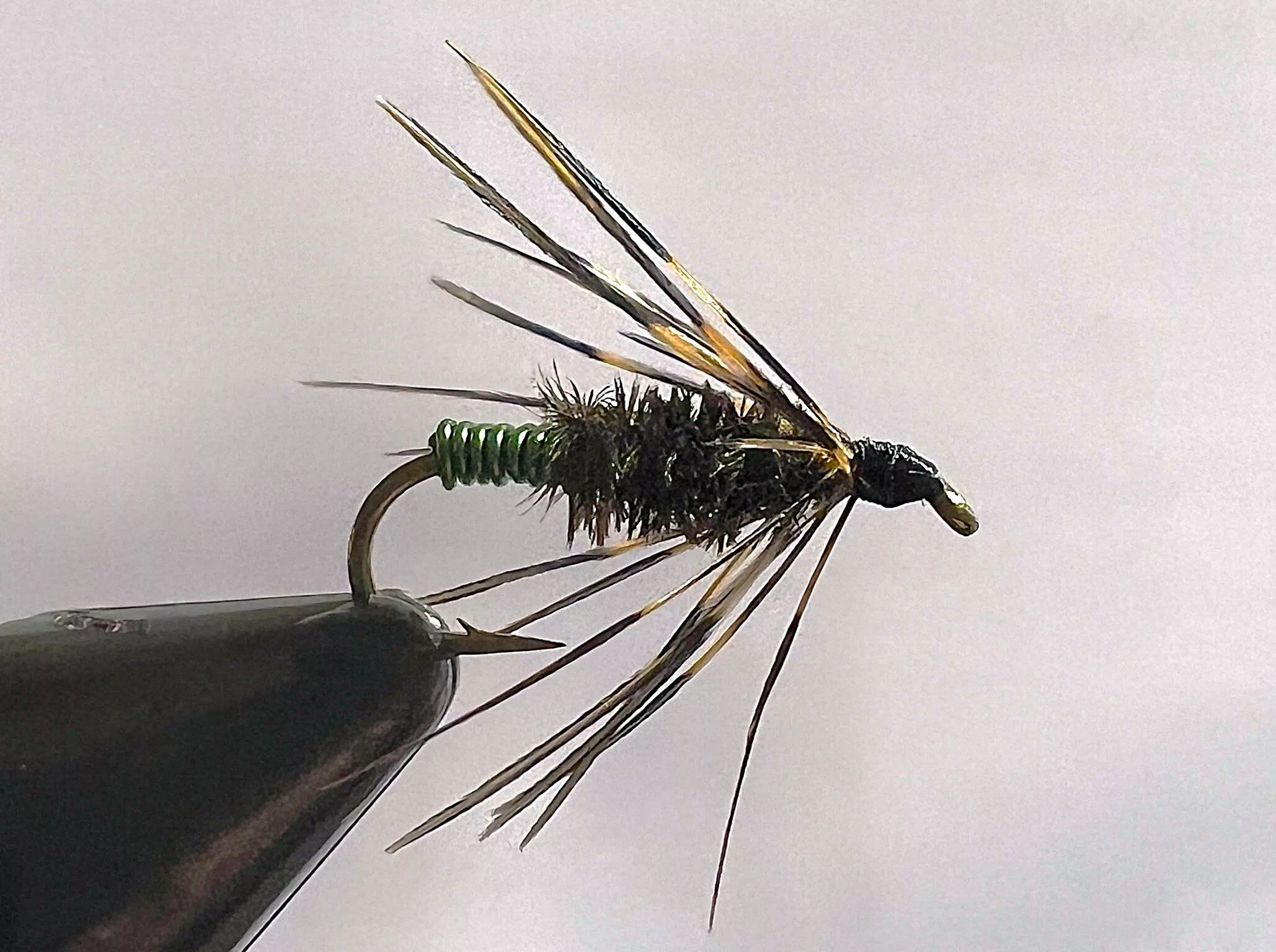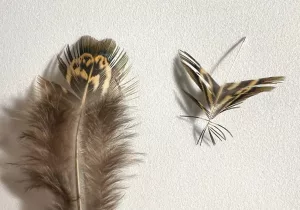
The Hot Butt Caddis Soft Hackle tied by Nick Simonson.
By Nick Simonson
Caddisflies provide a spring and summer target for all species from trout to panfish, and there are tons of great imitators out there. When these insects are flitting about the surface and getting ready to deposit their eggs in a given water, hungry fish are on the lookout for an easy meal. The hot butt caddis soft hackle fly gives them that target with a bright wrap of wire simulating the eggs about to be dropped by the females of the species in the water and tying it up is a breeze.
MATERIALS
Hook: 2XL Nymph, Size 12-14
Thread: 6/0 Black
Abdomen: Medium Green Wire
Thorax: Peacock Herl
Hackle: Rooster Pheasant Back Feather

Begin the pattern by placing the hook in the vise and starting the thread on the shank about one-third of the way back from the hook eye, using this point as a mark for the rest of the recipe. Then tie in a strand of medium green wire all the way back to the bend and advance the thread to about one-third of the way back up the hook shank (1). Wrap the wire evenly toward the thread about eight or nine times, so each turn touches the last one; then secure the wire with a few thread wraps and trim off the excess (2).
Next tie in two strands of peacock herl at the point the wire ends and advance your thread forward another third of the hook shank (3). Wrap the herl forward evenly covering the last wrap of wire for a smooth transition into the thorax which goes all the way up to the thread where the herl can be tied down and the excess cut off (4).

Then select a back feather from a rooster pheasant pelt. It should fall in between the shoulder feathers, which are generally reddish brown with mottled cream centers, and before the rump feathers that start to get really blue, green and gold and longer in hackle length. Remove the fuzz from the stem of the feather, grab it by the tips, and stroke the fibers in the opposite direction, so they form a Y-shape. Tie the feather in by the tip and trim off any excess of that end before wrapping (5). Using a hackle pliers, wrap the feather around the hook shank twice, keeping the curvature of the fibers facing back toward the bend; once complete, tie the feather off and trim the excess (6). From there, form a small thread head, whip finish and cement for posterity (7).
It’s an easy tie that catches fish of all kinds and works well as a searching pattern, but especially when caddis season kicks off and hatches are happening frequently. Give it a shot on trout streams, stocked reservoirs, panfish ponds, and in the shallows of lakes where bluegills and sunfish are present, and it’s likely to be a hot ticket to a fast bite in the seasons to come.
